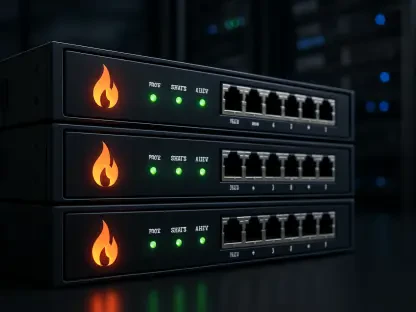In 2025, the global market for smart buildings is projected to reach unprecedented heights. This growth is largely driven by advancements in IoT applications that promise enhanced energy efficiency, optimized space utilization, and improved user experiences. However, this rapid expansion introduces complex cybersecurity challenges that could potentially undermine the smart building revolution. As buildings become more interconnected, so do the risks, with a notable 124% increase in IoT-targeted cyberattacks last year underlining the critical vulnerabilities at play. It is crucial to explore how these issues are being addressed to understand the dynamic landscape of smart building security and its future trajectory.
Understanding the Growth and Challenges of Smart Buildings
The proliferation of smart buildings is marked by a significant shift in how infrastructure leverages technology. From conventional analog systems, the industry has transformed into a sophisticated network of IoT-enabled environments. The push for digital transformation was catalyzed by the need for improved operational efficiency, thrusting building systems into interconnected ecosystems. Yet, this evolution has exposed buildings to novel cybersecurity threats, emphasizing the need for robust security measures.
The trajectory of this market is evident in its projected value, anticipated to soar to $130 billion by 2030 within the United States alone. This represents a compound annual growth rate of 25.9%, beginning from the current year. But, as growth accelerates, so does the urgency to tackle the cybersecurity challenges that accompany this transformation.
Innovative Solutions Addressing Cybersecurity Vulnerabilities
Strategic Role of Edge Computing in Cyber Defense
A key development in safeguarding smart buildings is the implementation of edge computing. Unlike traditional reliance on centralized cloud infrastructure, edge computing processes data closer to its origin, thereby reducing the risk associated with transferring data to vulnerable external servers. This approach not only ensures data remains secure but also enhances system responsiveness by alleviating latency issues. Companies such as BubblyNet exemplify this practice by integrating edge computing solutions that prioritize security within the building network itself.
Strengthening Security Through Bluetooth® Mesh Networks
Complementing edge computing, Bluetooth® Mesh networks provide an additional layer of security for smart buildings. These decentralized networks enable secure peer-to-peer communication, effectively removing single points of failure. Through encryption and distributed architecture, these networks make it significantly harder for unauthorized entities to infiltrate the system. This strategy, prominently employed by BubblyNet, underscores the importance of embedding cybersecurity into the core of building infrastructures rather than treating it as an afterthought.
Navigating Regional and Industry-Specific Cybersecurity Challenges
Beyond technological advancements, addressing cybersecurity in smart buildings requires considering regional and industry-specific factors. Differences in regulatory frameworks, cultural attitudes toward privacy, and diverse adoption rates all influence how cybersecurity measures are implemented. Solutions tailored to these considerations are vital for developing comprehensive security strategies capable of adapting to varied environmental contexts.
Prospective Developments in the Smart Building Sector
The future of smart buildings looks promising with several anticipated advancements on the horizon. The adoption of artificial intelligence for threat detection, innovations in privacy-preserving technologies, and evolving regulatory environments are poised to reshape cybersecurity strategies. Industry leaders forecast that these progressions will lead to systems that are not only more resilient but also inherently secure, thereby enhancing trust in smart building solutions.
Strategic Steps Toward Enhanced Security
For stakeholders navigating the complexities of smart building security, the adoption of proactive strategies is imperative. Integrating cybersecurity measures from the outset of building design ensures comprehensive protection. Embracing technologies such as edge computing and mesh networks can significantly bolster an organization’s security defenses. Continuous monitoring of emerging trends and updating protocols is essential to mitigate evolving risks effectively.
The Way Forward for Secure Smart Buildings
The insights from this analysis highlight the critical yet complex landscape of smart building cybersecurity. As industries tackle these challenges with innovative solutions like edge computing and Bluetooth® Mesh networks, there is a notable shift toward embedding security and privacy at the design level. This trend is essential not only for safeguarding infrastructures but also for protecting occupants within these intelligent environments. By focusing on proactive and integrated cybersecurity strategies, stakeholders embrace a future where smart buildings are both cutting-edge and resilient.









